Edge Banding in Cabinet Design Software Projects
Edge banding as addressed by SketchList 3D.
Edge banding is a material applied to cover the rough edges of plywood to improve appearance. Plywood and melamine-coated particleboard have plenty of advantages over solid stock, but you do need to cover their edges.
Overview
Edge banding is a thin, pre-sanded veneer tape. Made of wood or other material it is glued onto the edge of plywood. Its purpose is to give the appearance of a solid piece of wood. The veneer banding tape used has a heat-sensitive glue coat and applies quickly with an iron. Applying a veneer results in a clean and solid-wood look.
Edge banding comes in most species: birch, oak and cherry. Search online for more exotic species. Rolls of banding come in lengths of 8 ft. to 250 ft. and various widths. For 3/4-inch thick plywood people generally use either 13/16- or 7/8-in.-wide banding.
In higher volume shops an edge banding machine applies the decorative veneer to one or more sides of the boards. The complex machines apply the edge banding, press it onto the wood, and cut it accurately and neatly.
SketchList 3D Pro treats edge banding as a type of contour. To the extent the banding changes the appearance of the edging that category fits. Honestly it is such a standalone, not frequently used function it doesn’t justify it’s own category of menu item!
How to apply edge banding to boards.
Follow these steps.
- Select a board and go to the board detail level. Double click the board or click the Board Detail level in the hierarchical level form.
- Click on an edge on which to apply the veneer. It will turn green in color.
- Click the button Contour.
- Select Edge banding.
Set up the way you want to apply the edge banding.
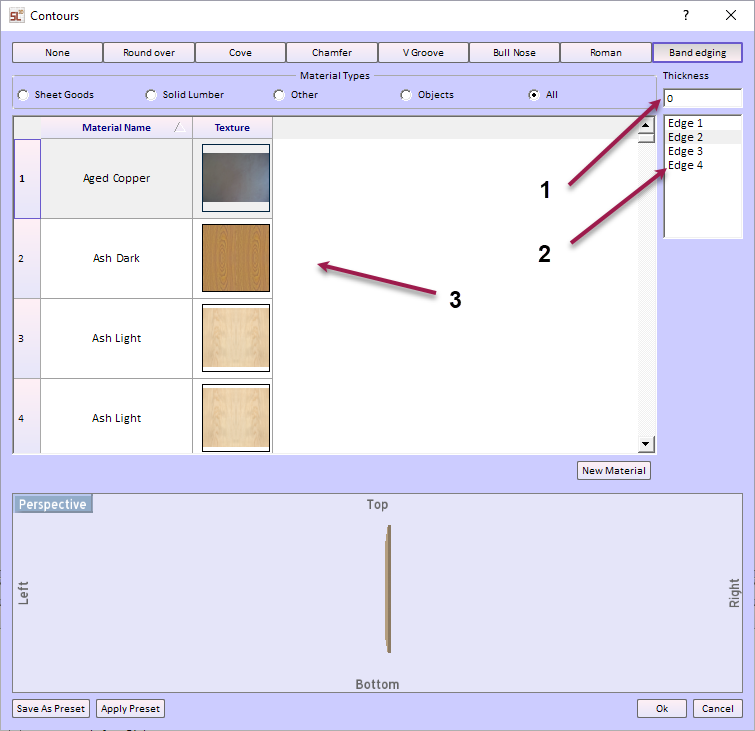
After clicking the button Band Edging:
- Enter the thickness of the material.
- Click on one or more edges to receive the material.
- Select the material texture.
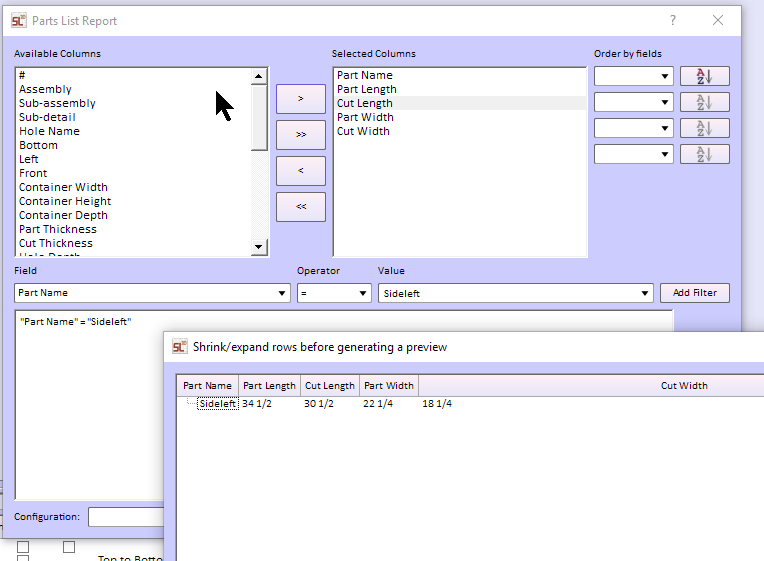
Notice that the cut sizes of the part is reduced by the thickness of the banding material. For our example purposes the thickness is two inches. The result is that the length and width of the board is 4 inches less than the nominal or design size. Four inches comes from two inches on each side or edge.
Edge Banding Report.
SketchList 3D accumulates the total footage of the banding material necessary for all the boards with banding material applied. To see that report click the reports menu item and select the report.
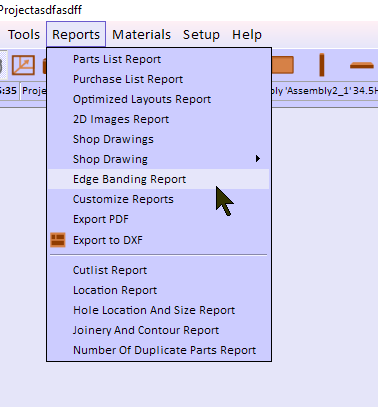
Notice that in our project the sample boards contain two different band thicknesses.
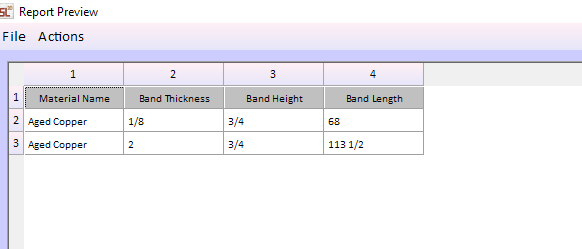
The banding shows up on the boards in the 3D view of SketchList so you can easily identify which boards contain the banding.
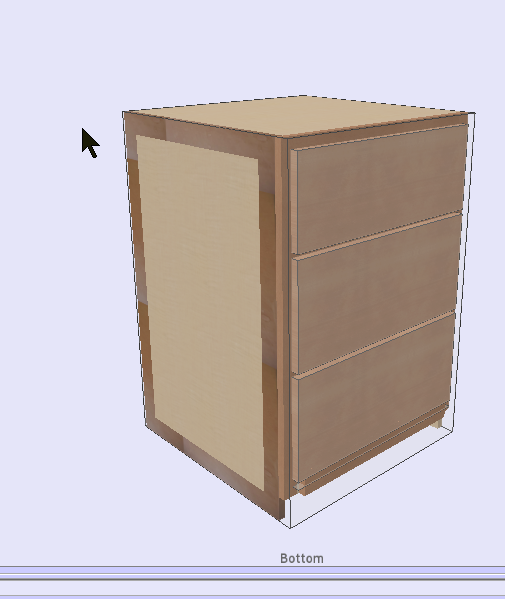
Edge banding machines span a wide range of features and prices. Here is an example of a edge banding application machine. LINK
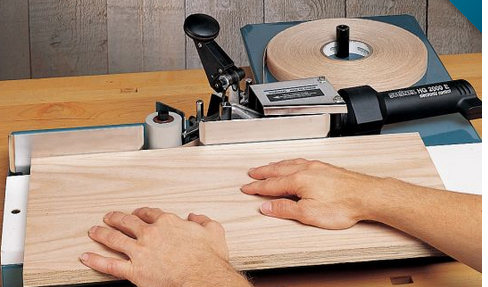
Of course, machines with many more features and capabilities are available at a wide range of prices.
See more on using contours in SketchList 3D by following this link.


